Nanhua Temple: Discovering the Tranquility of Zen Buddhism
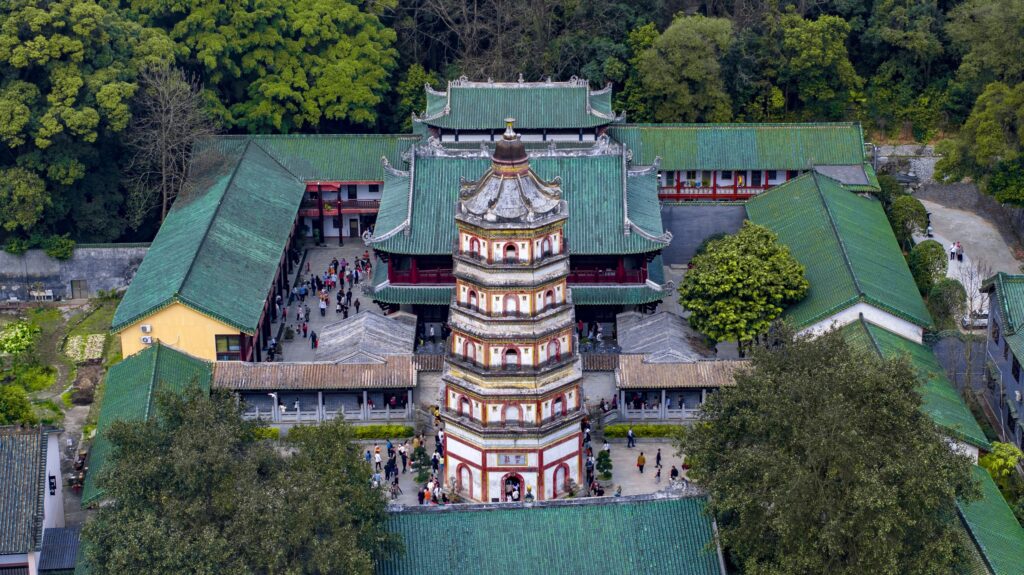
An Essential Guide to Visiting Nanhua Temple
Nestled along the serene banks of the Caoxi River in Shaoguan, China, Nanhua Temple is a captivating blend of spiritual sanctuary and architectural marvel. As one of the most revered Buddhist temples in the nation, it draws travelers from across the globe, seeking not only tranquility but also a deeper connection to the rich tapestry of Buddhist history and culture. The temple is particularly significant as the site where the Sixth Patriarch of Zen Buddhism, Hui Neng, preached, marking it as a pilgrimage destination for practitioners and enthusiasts alike.
Visitors are welcomed into a lush, tranquil environment, where ancient trees sway gently, and the subtle sound of flowing water enhances the temple’s sacred atmosphere. Each turn reveals intricately designed halls, majestic Buddha statues, and a wealth of historical artifacts. Whether you are drawn by a quest for spiritual enlightenment or simply to admire traditional Chinese architecture, Nanhua Temple promises an unforgettable experience that resonates with peace and reflection.
As you explore its expansive grounds, take time to immerse yourself in the serene ambiance, engage with the friendly monks, and perhaps even meditate in the peaceful courtyards. Nanhua Temple is not just a sight to behold; it is a journey into the heart of Zen Buddhism, inviting all who enter to pause, reflect, and connect with something greater than themselves.
In This Guide
- An Essential Guide to Visiting Nanhua Temple
- The Rich History and Legends of Nanhua Temple
- Main Highlights: What You Absolutely Can’t Miss
- Planning Your Visit: A Practical Guide
- Tickets: Prices, Booking, and Tips
- How to Get There: A Complete Transportation Guide
- Local Cuisine and Accommodation Nearby
- Frequently Asked Questions
- Final Thoughts on Your Trip
The Rich History and Legends of Nanhua Temple
Nestled amidst the serene landscapes of Shaoguan, China, Nanhua Temple (南华寺) stands as a testament to centuries of Buddhist heritage and cultural significance. Established in the 6th century during the Tang Dynasty, this revered site is intricately linked to the history of Zen Buddhism and holds a special place in the hearts of practitioners and visitors alike.
The temple’s origin is deeply rooted in the life of Hui Neng, the Sixth Patriarch of Zen Buddhism. Legend has it that Hui Neng, who lived from 638 to 713 AD, received the transmission of Zen teachings at this very location. This pivotal moment not only marked the proliferation of Zen Buddhism in China but also shaped its core philosophies that would resonate through history. Nanhua Temple was built as a tribute to Hui Neng, whose teachings emphasized direct experience and enlightenment over doctrinal study. His autobiography, still influential today, recounts his journey and the establishment of this sacred site, making it a pilgrimage destination for Zen practitioners.
Over the centuries, the temple has undergone numerous renovations and expansions, reflecting various architectural styles while retaining its spiritual essence. Its majestic halls, intricately carved statues, and serene gardens have been meticulously maintained to honor the temple’s historical and spiritual significance. The Mahavira Hall, a highlight of the temple complex, houses a magnificent golden statue of Buddha, surrounded by relics that narrate the rich tapestry of Buddhist history and tradition.
Nanhua Temple is not only an architectural marvel but also a sanctuary of peace and reflection. Visitors often find themselves captivated by its tranquil atmosphere, enhanced by the lush greenery and serene ponds that dot the complex. The temple serves as a space for meditation, contemplation, and spiritual growth, attracting those seeking enlightenment or simply a quiet retreat from the hustle of modern life.
The legacy of Nanhua Temple continues to thrive today, as it remains an essential site for Buddhist education and practice. Its connection to notable Zen masters, including the revered Master Xu Yun, is celebrated through various ceremonies and rituals that take place throughout the year. The temple’s commitment to preserving the teachings of Zen Buddhism ensures that it remains a beacon of spiritual wisdom, drawing international travelers and local devotees alike.
In essence, visiting Nanhua Temple offers more than just a glimpse into the past; it provides an opportunity to engage with the living traditions of Buddhism. Whether you are a seasoned practitioner or a curious traveler, the rich history and legends of Nanhua Temple promise a profound experience that resonates long after you leave its sacred grounds.
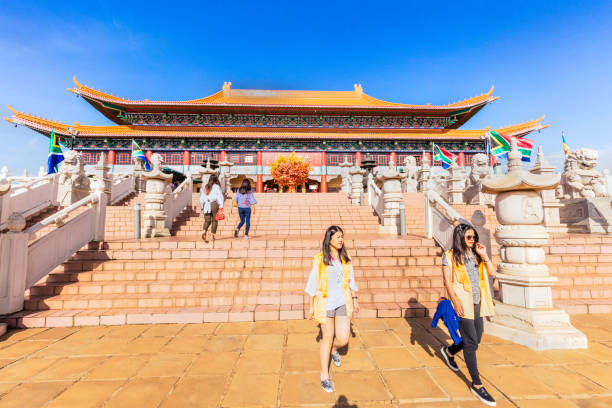
Nanhua Temple.
Main Highlights: What You Absolutely Can’t Miss
When visiting Nanhua Temple (南华寺), a revered Buddhist sanctuary in Shaoguan, there are several highlights you absolutely can’t miss. This temple, steeped in history and spiritual significance, offers a unique blend of architectural beauty and serene nature, making it an essential stop for international travelers.
1. Mahavira Hall (大雄宝殿)
Step inside the magnificent Mahavira Hall, the heart of Nanhua Temple, where you will be greeted by three stunning golden Buddha statues. This hall is not only an architectural marvel but also a spiritual center for prayer and meditation. The intricate carvings and serene atmosphere invite visitors to pause, reflect, and appreciate the artistry and devotion that has been poured into this sacred space.
2. The Relics of Master Hui Neng
As the resting place of the sixth patriarch of Zen Buddhism, Master Hui Neng, Nanhua Temple draws pilgrims and tourists alike. His relics are a focal point of the temple, attracting those seeking spiritual connection and understanding of Zen teachings. A visit here is a profound experience that speaks to the roots of Buddhism in China.
3. Zen Gardens and Serene Ponds
Surrounding the temple are beautifully landscaped gardens, ancient trees, and tranquil ponds. These natural features create the perfect setting for reflection and meditation. Take a leisurely stroll through the grounds, find a quiet corner, and immerse yourself in the peaceful ambiance. The gardens are a testament to the harmonious relationship between nature and spirituality.
4. Historic Artifacts and Cultural Exhibits
Throughout the temple complex, you will find a variety of ancient relics and artifacts that showcase the rich history of Buddhism in China. These exhibits provide insight into the development of Zen practices and the cultural significance of the temple within the Buddhist community.
5. Stupas and Monastic Buildings
Don’t miss the opportunity to explore the various stupas and monastic buildings scattered throughout the temple grounds. Each structure holds its own history and significance, particularly the stupa dedicated to Master Xu Yun, a prominent figure in modern Zen Buddhism. The architecture reflects traditional Chinese styles, enriched by centuries of devotion.
6. Meditation Spaces
For those interested in meditation, Nanhua Temple offers several designated areas where visitors can practice mindfulness and connect with their inner selves. Whether you are an experienced practitioner or a novice, these spaces provide a serene backdrop for your spiritual journey.
7. Welcoming Monastic Community
Interact with the friendly monks and temple staff who help maintain the tranquil atmosphere of the temple. Their warmth and hospitality enhance the experience, allowing visitors to gain a deeper appreciation for the teachings and practices of Buddhism. If you’re fortunate, you may even witness a traditional ceremony or participate in a meditation session.
8. Accessibility and Visitor Information
Nanhua Temple is open daily from 7:30 AM to 5:30 PM, with a modest entrance fee that includes complimentary joss sticks for your prayers. The temple is conveniently located along the scenic Caoxi River, just 7 km east of Maba Town, making it easily accessible for those traveling from Shaoguan.
By immersing yourself in the sacred atmosphere of Nanhua Temple, you not only explore a significant piece of Buddhist history but also find a space for personal reflection and tranquility. Whether you’re seeking spiritual enlightenment or simply a moment of peace, the temple promises an enriching experience.
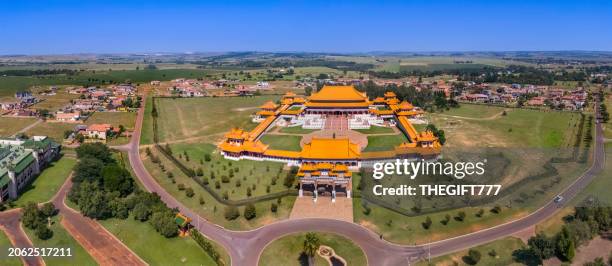
Nanhua Temple.
Planning Your Visit: A Practical Guide
Visiting Nanhua Temple is an enriching experience that combines spirituality, history, and stunning architecture. Nestled along the serene Caoxi River in Shaoguan, Guangdong Province, this revered site serves as a key destination for both Buddhists and travelers seeking tranquility. Here’s everything you need to know to make the most of your visit.
Getting There
Address:
Nanhua Temple, Along Caoxi River, 7km east of Maba Town, Qujiang District, Shaoguan, 512110, China.
Transportation:
– By Taxi: Taxis from Shaoguan city to the temple will cost around ¥200 for a round trip. It’s advisable to arrange a return taxi beforehand, especially during busy times.
– By Car: If you’re driving, there’s ample free parking available at the temple.
– Public Transport: Unfortunately, there are limited public transport options directly to the temple, so taxis or private vehicles are the best choice.
Opening Hours
Nanhua Temple is open daily from 7:30 AM to 5:30 PM. It’s advisable to arrive early to fully explore the grounds without the crowds.
Admission Fee
The entrance fee is approximately ¥20 per person, which includes a small bundle of joss sticks for burning at the entrance.
What to Expect
Nanhua Temple is a tranquil oasis characterized by its lush surroundings and impressive architecture. Here are some highlights to look out for:
- Mahavira Hall: This grand hall houses magnificent golden Buddha statues and is a focal point for both worship and reflection.
- Historical Significance: The temple is associated with Hui Neng, the sixth patriarch of Zen Buddhism, making it a pilgrimage site for practitioners.
- Serene Grounds: Stroll through beautifully maintained courtyards, ancient trees, and serene ponds that create a calming atmosphere. The temple is an ideal place for meditation and reflection.
- Cultural Artifacts: Explore various ancient relics and artifacts that provide insight into Buddhist history and culture.
Tips for Your Visit
-
Dress Appropriately: As a religious site, modest clothing is recommended. Ensure your shoulders and knees are covered.
-
Respectful Behavior: Be mindful of the temple’s sanctity. Speak softly, and observe the customs, such as bowing before entering sacred areas.
-
Photography: While photography is allowed in most areas, be respectful of any signs indicating restrictions, especially in places of worship.
-
Plan for Walking: The temple grounds are extensive, so wear comfortable shoes and be prepared for some walking.
-
Engage with the Monks: The monks and staff are generally welcoming. If you have questions about the temple or Buddhism, don’t hesitate to ask.
Nearby Attractions
If you have time, consider visiting these nearby sites:
- Caoxi Hot Spring (3.5 km away): Perfect for relaxation after your temple visit.
- Maba Man Ruins: A historic site that offers insight into the region’s past.
- Shaoguan Lion Rock: A great spot for those interested in hiking and enjoying scenic views.
Dining Options
There is a vegetarian restaurant within the temple grounds, but dining options are limited. For a broader selection, consider exploring local restaurants in nearby villages.
Conclusion
Nanhua Temple is more than just a tourist attraction; it’s a place of peace and reflection that invites you to explore the depths of Zen Buddhism and its cultural significance. With its breathtaking architecture and serene surroundings, your visit is sure to be a memorable and enlightening experience.
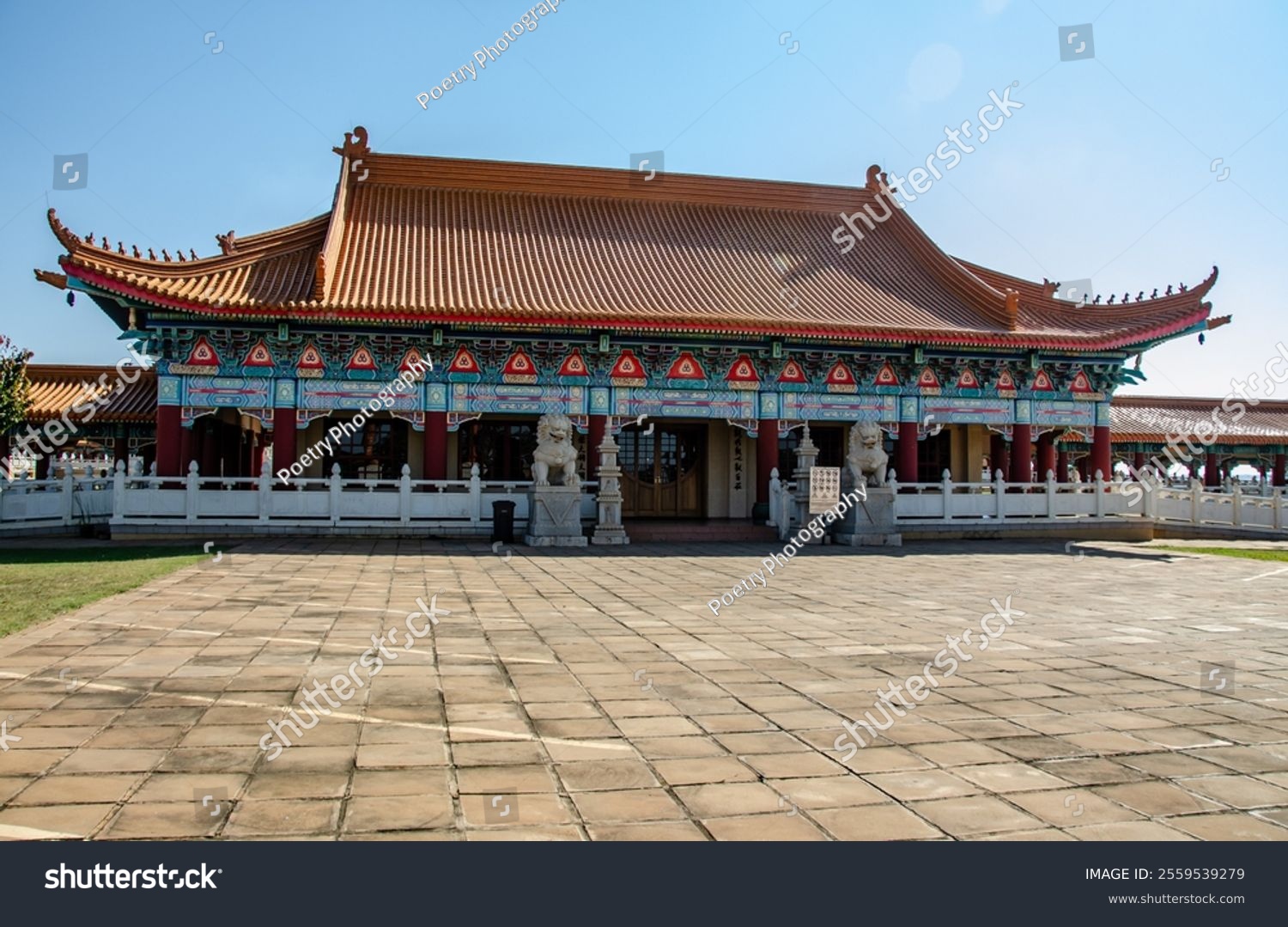
Nanhua Temple.
Tickets: Prices, Booking, and Tips
Visiting Nanhua Temple is an enriching experience that seamlessly blends spiritual exploration with cultural appreciation. Here’s what you need to know about ticket prices, booking, and some handy tips for your visit.
Admission Fees
Entrance to Nanhua Temple is quite affordable, with tickets priced at approximately ¥20 (around $3 USD) per person. This fee typically includes a small bundle of joss sticks, which you can use as part of the temple’s traditional practices.
Opening Hours
The temple welcomes visitors daily from 7:30 AM to 5:30 PM. It’s advisable to arrive early to fully immerse yourself in the serene atmosphere and explore the various halls and courtyards without the crowds.
Booking Information
Generally, you do not need to book tickets in advance for Nanhua Temple. Tickets can be purchased at the entrance. However, during peak tourist seasons or significant religious events, it may be wise to arrive early to secure your entry and enjoy a more tranquil experience.
Transportation Tips
If you’re coming from Shaoguan, taking a taxi is an excellent option. The fare for a round trip can be around ¥200 (approximately $30 USD), which is reasonable considering the distance. Ensure to negotiate the fare beforehand if you are using a non-metered taxi.
Additional Tips
- Explore the Grounds: The temple complex is expansive, so allocate a good amount of time—ideally a few hours—to wander through the gardens, admire the architecture, and visit the Mahavira Hall, which houses stunning Buddha statues.
- Respect Local Customs: Be mindful of the temple’s sacred environment. Dress modestly and observe the practices of the monks and other visitors. If you’re unsure about any customs, don’t hesitate to ask a monk or staff member.
- Photography: While capturing the beauty of the temple is encouraged, be respectful of areas where photography may not be allowed, especially during rituals.
- Stay Hydrated: With the lush surroundings and ample walking, keep yourself hydrated—especially during the warmer months.
Nanhua Temple is not just a place to visit; it’s an opportunity to connect with the rich heritage of Zen Buddhism and find a moment of peace in your travels. Enjoy your journey!
How to Get There: A Complete Transportation Guide
Getting to Nanhua Temple, one of China’s most revered Buddhist sites, is a rewarding journey that allows travelers to immerse themselves in both the spiritual ambiance and the rich history of Zen Buddhism. Here’s how to navigate your way to this tranquil sanctuary located in Shaoguan, Guangdong Province.
Arriving by Train
High-Speed Rail
The most convenient way to reach Shaoguan is via the high-speed rail network. The Shaoguan High-Speed Railway Station (韶关高铁站) is well-connected to major cities like Guangzhou, Shenzhen, and Beijing. Trains from Guangzhou take approximately 1-1.5 hours.
- From Guangzhou: Board a train from Guangzhou South Railway Station (广州南站) to Shaoguan.
- Tickets: Tickets can be purchased online, through apps like Ctrip or at the station. Prices generally range from CNY 80 to CNY 150 depending on the type of train.
- Arrival: Once you arrive at Shaoguan High-Speed Railway Station, you will need to take a taxi or a bus to the temple.
Getting to the Temple from Shaoguan
By Taxi
Taking a taxi is the most straightforward option from the Shaoguan High-Speed Railway Station to Nanhua Temple.
- Travel Time: About 30 minutes
- Cost: Expect to pay around CNY 60-80 for a one-way trip. Make sure to confirm the fare before starting your journey.
By Public Bus
For those looking for a more economical option, public buses are available.
- Bus Route: Look for buses heading to the Nanhua Temple (南华寺) directly. The local bus line should take you close to the temple entrance.
- Cost: A bus ticket typically costs around CNY 5.
- Frequency: Buses run regularly, but it’s advisable to check the latest schedules.
Driving to Nanhua Temple
If you prefer to drive, renting a car is a feasible option.
- Route: From Shaoguan city center, take the G4 Beijing-Hong Kong-Macau Expressway and then follow signs for Nanhua Temple. The temple is located about 7 kilometers east of Maba Town in the Qujiang District.
- Parking: There is ample free parking available at the temple.
Local Considerations
- Language: While many local drivers may not speak English, having the name “Nanhua Temple” (南华寺) written in Chinese can be very helpful.
- Best Time to Visit: The temple is open daily from 7:30 AM to 5:30 PM. Arriving early can help you avoid crowds and enjoy a more peaceful experience.
- Entrance Fee: The entry fee is approximately CNY 20 per person, which includes a small bundle of joss sticks for offerings.
Conclusion
Visiting Nanhua Temple is not just about reaching a destination; it’s about the journey that leads you to a place of spiritual significance and stunning architecture. Whether you choose to travel by train, taxi, bus, or car, each option offers a glimpse into the beautiful landscapes of Guangdong Province. Prepare to be captivated by the serene environment and the rich history that awaits you at this sacred site.
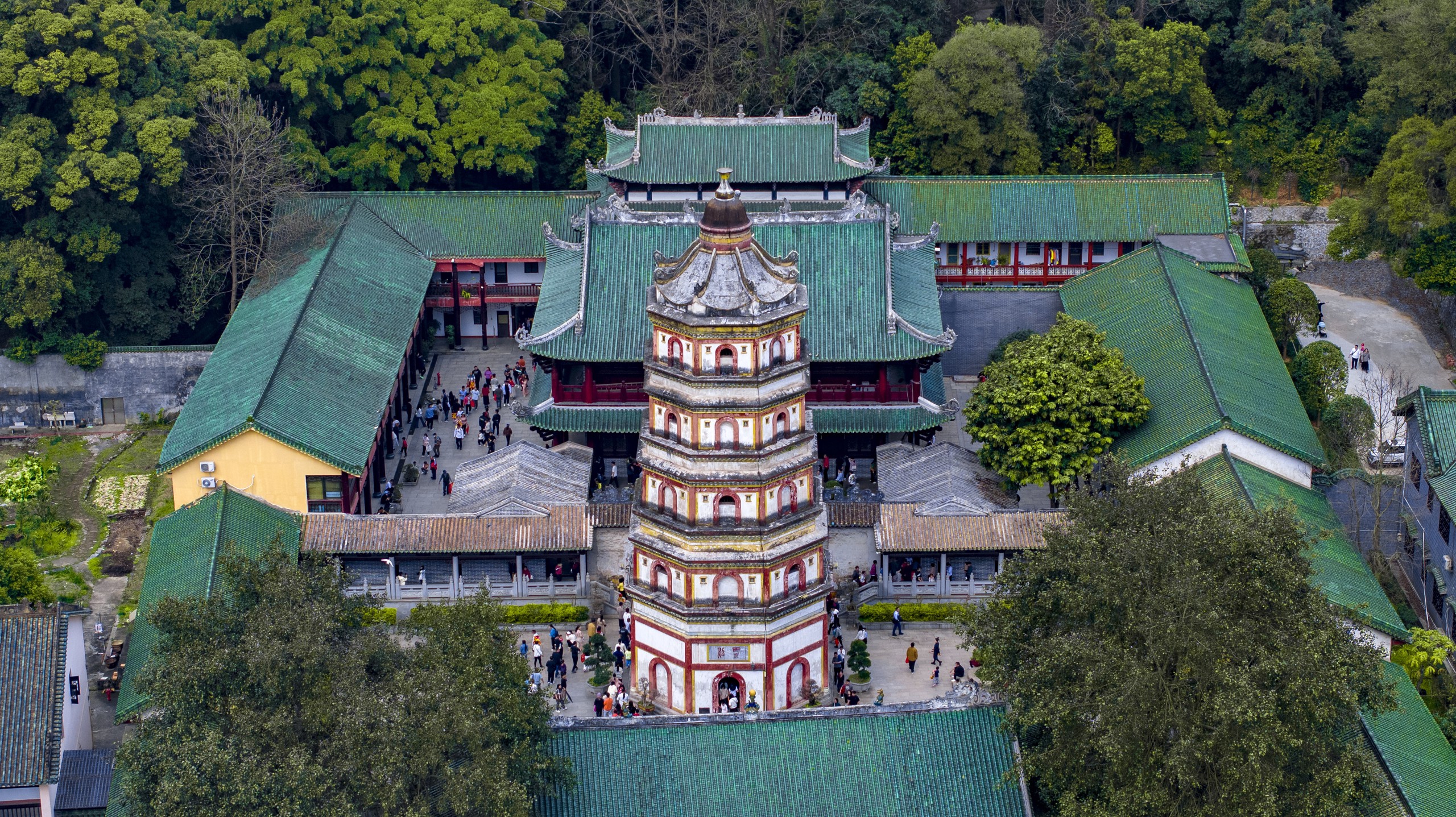
Nanhua Temple.
Local Cuisine and Accommodation Nearby
When visiting the serene Nanhua Temple, you’ll find not only a spiritual sanctuary but also a variety of delightful dining options and comfortable accommodations nearby. Whether you’re looking for a quick snack or a place to unwind after a day of exploration, this area has something to offer.
Dining Options
Mo Fei CoffeeBreak
Just a short drive from the temple, this quaint café is perfect for travelers seeking a cozy spot to relax. Known for its aromatic coffee and light bites, Mo Fei CoffeeBreak offers a welcoming atmosphere where you can enjoy a refreshing drink while reflecting on your temple experience.
Local Village Restaurants
For an authentic taste of local cuisine, venture into the nearby villages. These family-run establishments often serve traditional Chinese dishes made from fresh, locally sourced ingredients. Here, you can savor a variety of flavors, including stir-fries, dumplings, and regional specialties. Don’t hesitate to ask the locals for their recommendations — they may lead you to hidden gems!
Vegetarian Restaurant at the Temple
Inside the temple grounds, there’s a vegetarian dining option that caters to the spiritual ambiance of Nanhua Temple. Here, you can enjoy simple yet delicious vegetarian meals, perfect for those who want to nourish their bodies in alignment with the temple’s peaceful ethos.
Accommodation
Shaoguan Hotels
If you’re looking to stay overnight, Shaoguan offers several hotels within a reasonable distance from Nanhua Temple. Many of these accommodations are equipped with modern amenities and provide a comfortable base for your explorations. The hotels often feature lovely views and are conveniently located near local attractions.
Guesthouses and Homestays
For a more intimate experience, consider staying at a local guesthouse or homestay. These options allow you to immerse yourself in the local culture and hospitality. Many hosts are eager to share stories and tips about the area, enhancing your travel experience.
Monastic Accommodation
For the adventurous traveler, inquire about the possibility of staying in simple monastic accommodations at the temple itself. This unique experience allows for deeper spiritual engagement and reflection amidst the tranquil surroundings of the temple grounds.
With these dining and accommodation options, your visit to Nanhua Temple can be both fulfilling and memorable. Enjoy the blend of culinary delights and serene lodging as you explore this majestic site.
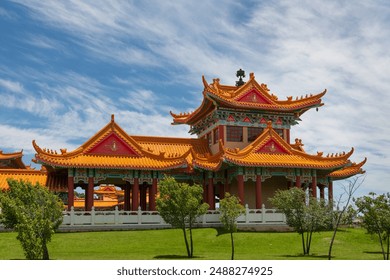
Nanhua Temple.
Frequently Asked Questions
-
What are the opening hours for Nanhua Temple?
Nanhua Temple is open daily from 7:30 AM to 5:30 PM. Be sure to plan your visit accordingly to make the most of your time there. -
Is there an entrance fee?
Yes, the entrance fee is approximately ¥20 (Chinese Yuan) per person, which typically includes a small bundle of joss sticks for visitors to use during their time at the temple. -
How do I get to Nanhua Temple from the nearest city?
The temple is located about 7 kilometers east of Maba Town in Shaoguan. You can reach it by taxi, which costs around ¥200 for a round trip from Shaoguan city. Alternatively, local buses may also be available, though schedules may vary. -
What should I wear when visiting the temple?
It is recommended to dress modestly and respectfully, as Nanhua Temple is a sacred site. Comfortable clothing and closed-toed shoes are advisable, especially since there may be a lot of walking and some steps to navigate. -
Are there any facilities for food and drinks nearby?
While there is a vegetarian restaurant on-site, options may be limited. There are several countryside restaurants in the nearby villages where you can enjoy local cuisine. It’s a good idea to bring bottled water and snacks if you plan to spend several hours exploring the temple grounds. -
Can I take photographs inside the temple?
Photography is generally allowed in most areas of the temple, but be respectful of the sacredness of the space, especially in places where worship is taking place. Always check for any signs indicating restrictions. -
What is the significance of Nanhua Temple?
Nanhua Temple is a prominent site in Zen Buddhism, being the resting place of the Sixth Patriarch, Hui Neng. It holds significant historical and cultural value, making it a pilgrimage destination for practitioners and an enriching experience for visitors. -
Are there any specific customs or etiquette I should be aware of?
Yes, visitors are encouraged to observe local customs, such as burning joss sticks upon entering and maintaining a quiet demeanor. It’s also respectful to bow slightly when passing by sacred statues and to avoid touching any artifacts unless permitted.
Final Thoughts on Your Trip
As you conclude your journey at Nanhua Temple, take a moment to reflect on the profound beauty and serenity that envelops this sacred site. Nestled amidst lush greenery and rich in history, the temple offers a unique glimpse into the heart of Zen Buddhism and the enduring spirit of its teachings. Whether you wandered through its majestic halls, marveled at the golden Buddha statues in the Mahavira Hall, or embraced the tranquil atmosphere of the courtyards and ponds, this experience invites you to reconnect with your inner self and find peace.
Nanhua Temple is more than just an architectural marvel; it is a spiritual sanctuary that resonates with the stories of ancient masters and the devotion of countless pilgrims. As you leave, carry with you the echoes of wisdom and tranquility that linger in the air, and perhaps a newfound appreciation for the harmonious blend of nature and spirituality. May your visit inspire you to seek moments of stillness and reflection in your own life, reminding you that the journey toward enlightenment is as important as reaching the destination. Safe travels, and may you find peace wherever your adventures take you next.